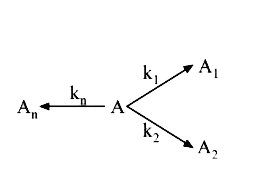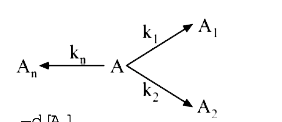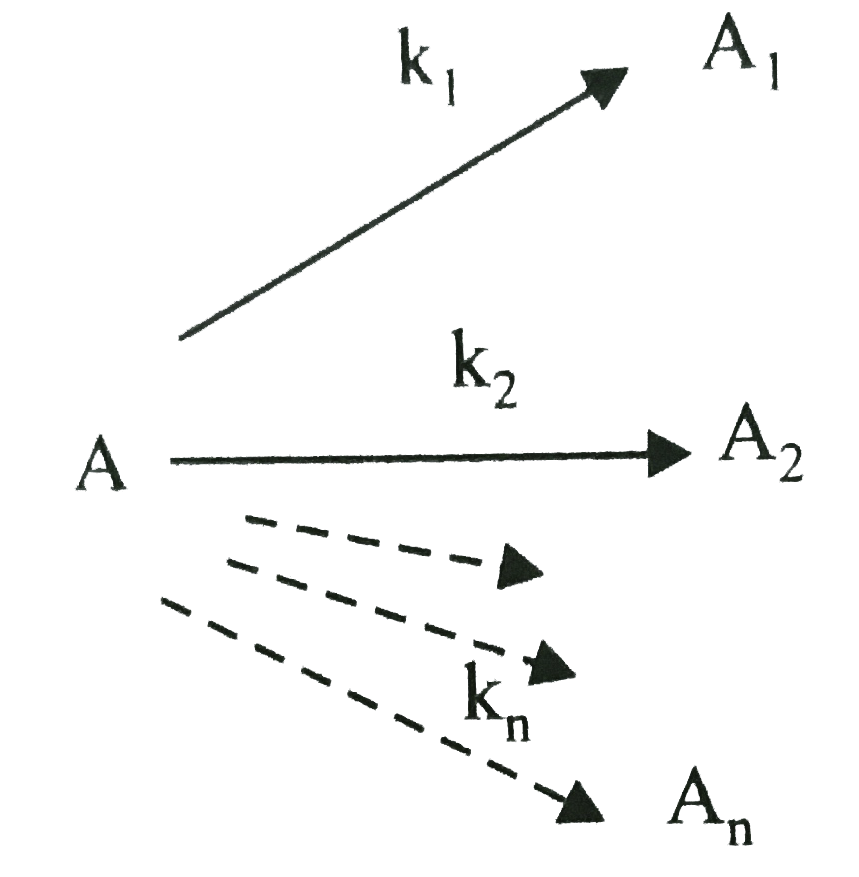For a 1st order decomposition,

overall k will be given by :
k=k1+k2+….+kn
k=(k1+k2+….+kn)/n
k=k1×k2×….×kn
none of these
The correct Answer is:A

−d[A]dt=k1[A]+k2[A]+……+kn[A]=k[A]
Where k is the overall rate of reaction (k1+k2+….+kn)[A]=k[A]⇒k1+k2+….+kn=k
Similar Questions
Knowledge Check
For a Ist order decomposition of A as given

Therefore rate constant (K) for the overall decomposition of A isAK=k1+k2+…..+knBK=(k1+k2+…..+kn)nCK=k1×k2×…..×knDK=k1k2+k2k3+…..+kn−1knConsider a first order gas phase decomposition reaction given below:
A(g)→Bg+Cg
The initial pressure of the system before decomposition of A was pi. After lapse of time t'. Total pressure of the system increased by x units and became Pt. the rate constant k for the reaction is given asAk=2.303tlogPiPi−xBk=2.303tlogPi2Pi−PtCk=2.303tlogPi2Pi+PtDk=2.303tlogPiPi+xConsider a first order gas phase decomposition reaction given below :
A(g) → B(g) + C(g)
The initial pressure of the system before decomposition of A was Pi. After lapse of time 't', total pressure of the system increased by x units and became 'pt' The rate constant k for the reaction is given as :Ak=2.303tlogpi2pi−xBk=2.303tlogpi2pi−ptCk=2.303tlogpi2pi+ptDk=2.303tlogpipi+x
The rate constant for a first order decomposition reaction is given by log K=10 - 1000/T .Then,what will be activation energy in kcal/mol?
View SolutionThe rate constant for the first order decomposition of N2O5 is given by the following equation: k=(2.5×1014s−1)e(−25000K)/T
Calculate Ea for this reaction and rate constant if its half-life period be 300 minutes.
View SolutionConsider a first order gas phase decomposition reaction given below:
A(g)→Bg+Cg
The initial pressure of the system before decomposition of A was pi. After lapse of time t'. Total pressure of the system increased by x units and became Pt. the rate constant k for the reaction is given as
View SolutionRate of 1st order depends upon
View SolutionFor a 1st order reaction if concentration is doubled then rate of reaction becomes
View Solution
